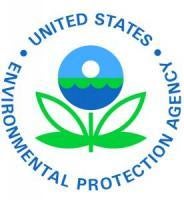Company also agrees to pay $210,000 penalty for oil spill response violations at Maryland facility.
WASHINGTON – The U.S. Environmental Protection Agency (EPA) and the U.S. Department of Justice announced that BP Products North America, Inc. will pay a $210,000 penalty and implement an enhanced oil spill response program at its oil terminals nationwide, as well as a comprehensive compliance audit to resolve alleged violations of oil spill response regulations at its Curtis Bay Terminal in Md. The enhanced oil spill response program will help ensure that BP’s oil terminals are better prepared to respond to oil spills that could affect people's health and the environment.
EPA alleged that BP Products violated federal regulations requiring oil storage facilities to conduct drills and exercises to respond to oil spills at its Curtis Bay Terminal. The civil penalty is EPA’s highest to date for violations of oil drills and exercises requirements where there was no discharge of oil.
"Being prepared to respond to an oil spill can be the difference between dealing with a small, contained event or a full-blown environmental disaster," said Cynthia Giles, assistant administrator for EPA’s Office of Enforcement and Compliance Assurance. “After twice failing to pass oil spill response exercises at its Curtis Bay facility, under the settlement, BP is required to put preventative measures into place at all of its terminals nationwide that will reduce the threat of oil spills and protect our nation’s valuable waterways. These measures also raise the bar for forward-looking companies seeking to ensure that their facilities are ready to respond quickly in the event of a spill.”
“This agreement will help BP Products strengthen its spill response capabilities across the nation at 33 onshore oil terminals, implementing enhanced oil spill response measures, and requiring an independent auditor to evaluate a dozen high-risk onshore facilities for their readiness to respond to oil spills,” said Ignacia S. Moreno, assistant attorney general for the Environment and Natural Resources Division of the Department of Justice. “Taking these steps will help instill a culture of readiness and preparedness that will help protect many communities, and the natural resources upon which they rely, from future harm.”
Under the settlement filed today in federal court by the U.S. Department of Justice, BP Products will implement a first-of-its-kind program of spill prevention measures at its 33 non-refinery petroleum products terminals across the country.
As part of this program, the company will review and revise response plans for these facilities to ensure safeguards are tailored to the conditions at each facility. BP Products will also perform enhanced training, drills and exercises, exceeding regulatory requirements, and will repeat any failed drills and exercises within 90 days.
In addition, BP Products has agreed to an independent compliance audit of 12 of its marine and high-risk petroleum product terminal facilities. The audits will ensure that each audited facility is in compliance with spill response requirements, and to evaluate whether the facilities have resources to respond to major spills. The results of the compliance audits will also be incorporated into the enhanced spill prevention and response program being implemented at all of BP’s petroleum terminals.
EPA and the U.S. Coast Guard twice conducted unannounced government-initiated oil spill response exercises at the Curtis Bay Terminal. During these exercises, BP Products was required to demonstrate its response to a small scale discharge of fuel oil from the facility into Curtis Creek by being prepared to deploy 1,000 feet of oil containment boom within one hour and subsequently deploying the boom. On both occasions, the company did not complete the exercise in the allotted time and failed to adequately deploy the containment boom.
The Curtis Bay Terminal, which can store about 22 million gallons of oil, is located less than a quarter mile from Curtis Creek, a tributary of Curtis Bay, the Patapsco River, and the Chesapeake Bay.
High-risk onshore facilities that store oil, such as the Curtis Bay Terminal, must have a plan for responding to oil spills that includes employee training, spill response equipment, and a “worst case” contingency plan for containing and cleaning up spills.
Based on the failed drills, EPA cited the company for failing to adequately implement a response plan, failing to identify sufficient spill response resources at the facility, and deficiencies in the facility’s training, drills and exercises program.
The proposed consent decree is subject to a 30 day public comment period and final court approval.
More information about the settlement: http://www.epa.gov/enforcement/water/cases/curtisbay.html
More information about EPA’s Federal Response Plan requirements: http://www.epa.gov/emergencies/content/frps/index.htm
More about the Spill Prevention Control and Countermeasure requirement: http://www.epa.gov/emergencies/content/spcc/index.htm



 />i
/>i
